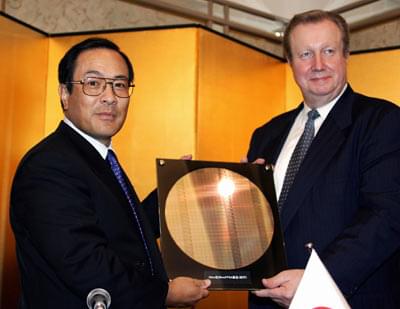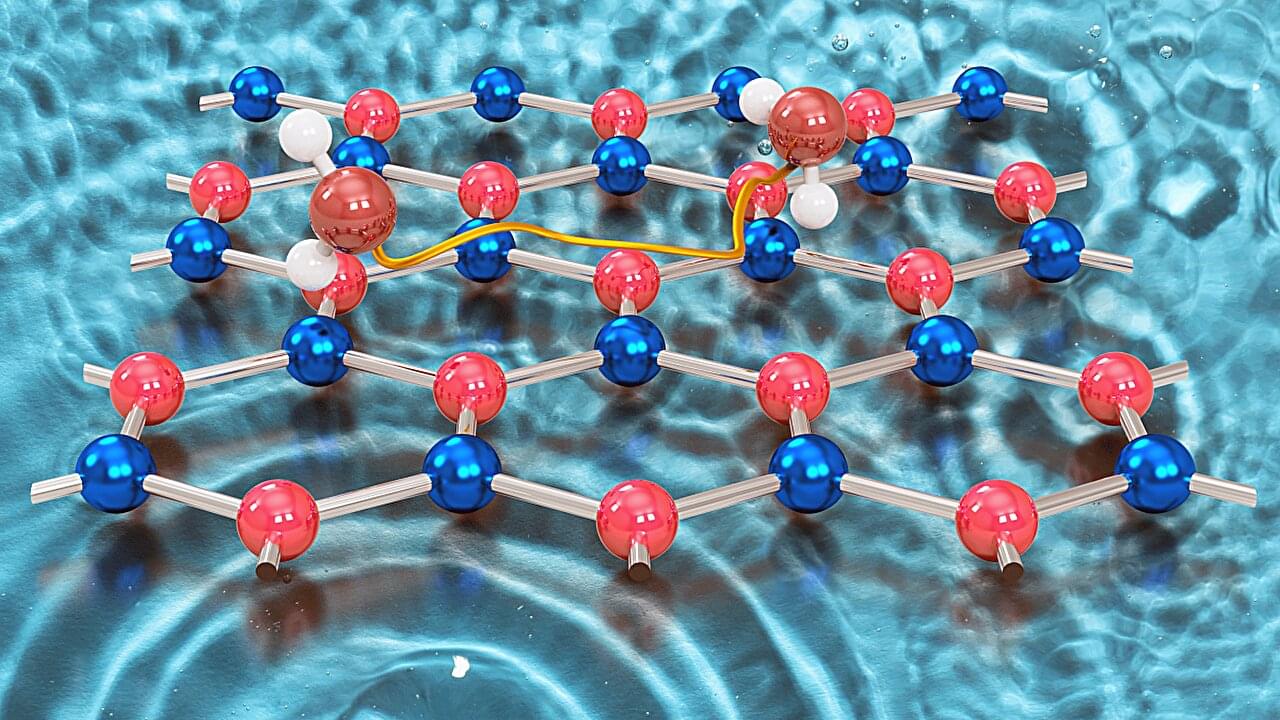Just don’t try to pop it in that old Walkman.



The synthesis and the characterisation of silicon nanowires (SiNWs) have recently attracted great attention due to their potential applications in electronics and photonics. As yet, there are no practical uses of nanowires, except for research purposes, but certain properties and characteristics of nanowires look very promising for the future.

In the next section, we’ll look at the ways scientists can grow nanowires from the bottom up.
Looking at the Nanoscale.
A nanoscientist’s microscope isn’t the same kind that you’ll find in a high school chemistry lab. When you get down to the atomic scale, you’re dealing with sizes that are actually smaller than the wavelength of visible light. Instead, a nanoscientist could use a scanning tunneling microscope or an atomic force microscope. Scanning tunneling microscopes use a weak electric current to probe the scanned material. Atomic force microscopes scan surfaces with an incredibly fine tip. Both microscopes send data to a computer, which assembles the information and projects it graphically onto a monitor.
Follow Nick on X: https://twitter.com/Telepath_8
Pre-order linkaChart for free: https://linkaChart.ai/?utm_term=ryan2
Generate AI voice audio via ElevenLabs: https://try.elevenlabs.io/xe894d3yv35h.
Neura Pod is a series covering topics related to Neuralink, Inc. Topics such as brain-machine interfaces, brain injuries, and artificial intelligence will be explored. Host Ryan Tanaka synthesizes information, shares the latest updates, and conducts interviews to easily learn about Neuralink and its future.
Sign up for Neuralink’s Patient Registry: https://neuralink.com/trials/
Join the Neuralink team: https://neuralink.com/careers/
I am many.
A dark ambient journey through feeling lost, detached, and emotionally numb.
use this mix for late-night thoughts, study, writing, sleep or to to calm down.
→▫️support me on ko-fi: https://ko-fi.com/blackridge.
→ download on bandcamp: https://blackridgeofficial.bandcamp.com/track/i-dont-recognize-myself-anymore.
→ get the wallpapers: https://ko-fi.com/s/a9d71bee15
#darkambient #backrooms #sad #liminalspace #sleep.
All audio has been modified, mixed, and mastered by blackridge.



An unusual public health policy in Wales may have produced the strongest evidence yet that a vaccine can reduce the risk of dementia. In a new study led by Stanford Medicine, researchers analyzing the health records of Welsh older adults discovered that those who received the shingles vaccine were 20% less likely to develop dementia over the next seven years than those who did not receive the vaccine.
The remarkable findings, published April 2 in Nature, support an emerging theory that viruses that affect the nervous system can increase the risk of dementia. If further confirmed, the new findings suggest that a preventive intervention for dementia is already close at hand.
In a follow-up study published Dec. 2 in Cell, the researchers found that the vaccine may also benefit those already diagnosed with dementia by slowing the progress of the disease.

A surprising discovery about how water behaves on one of the world’s thinnest 2D materials could lead to major technological improvements, from better anti-icing coatings for aircraft and self-cleaning solar panels to next-generation lubricants and energy materials.
In a study published in Nature Communications, researchers from the University of Surrey and Graz University of Technology tested two ultra-thin sheet-like materials with a honeycomb structure— graphene and hexagonal boron nitride (h-BN). While graphene is electrically conductive—making it a key contender for future electronics, sensors and batteries—h-BN, often called “white graphite,” is a high-performance ceramic material and electrical insulator.
